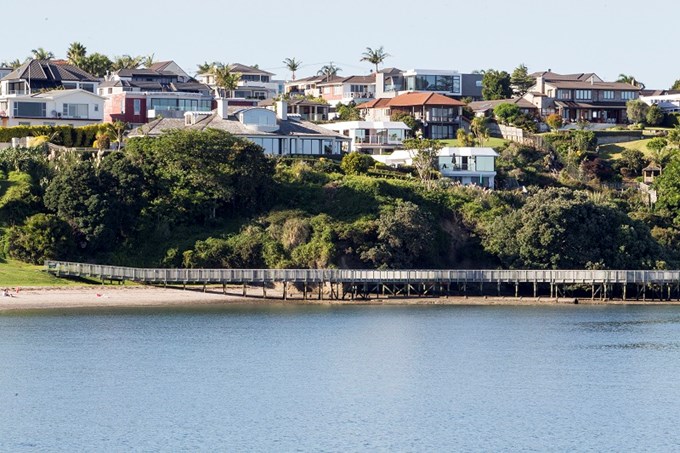A report detailing how erosion at Little Bucklands Beach, Bucklands Beach and Cockle Bay can be managed has been received by Howick Local Board.
The Tonkin and Taylor report outlines various multi-million-dollar programs, and does not address consenting, cultural, historical, landscape, or environmental matters.
Report details
Bucklands Beach and Little Bucks are on a deep channel controlled by sand from the Tahuna Torea Spit. It has strong tidal flows but few wave issues. Both areas are low-lying and subject to flooding.
Erosion at the southern end of Bucklands Beach is caused by sand moving north because of the predominant wind-generated wave direction and the northerly current.
Little Bucks is being hit by the encroachment of the upper beach because of reclamations impounding beach sediment and increasing wave reflection, and reduced sediment supply because of reclamation and stormwater outfall work around Granger Point.
A southerly movement of sand within the embayment was attributed to the Half Moon Bay marina giving more shelter from south-westerly waves.
The report says Cockle Bay beach is generally stable, with the key factors being wave reflection off the grouted stone wall and the stormwater outlet at the southern end of the bay acting as a headland control.
Wave reflection moves sand away from the northern end of the beach and causes erosion to the south of the wall. The southern stormwater outlet acts as a headland groyne and controls that part of the beach, providing a source of material for sand transfer.
On all the beaches, sea level rise will change wave heights and direct wave action higher up the beach and seawall faces, making inundation and storm surge effects more common.
Construction options
The report says options for Bucklands Beach include extending seawalls along the remainder of the shoreline ($3-5 million), larger scale beach nourishment with controls ($10-14m), and enhancing the upper beach by narrowing the road ($4-6m). Options one and three were considered the most practical.
At Little Bucks replacing the existing wall with a new piled wall could cost around $6 million, introducing beach nourishment with controls $2-3 million, and narrowing the road for a new piled wall $4-7million. Options one and two were identified as the most practical.
At Cockle Bay options include extending the existing wall ($500-600k), reducing wave reflections off the existing wall ($400- 450k), screening the wall with rock groynes, beach nourishment and an extended southern outfall ($1-1.5m), and screening the wall with a grouted rock breakwater with small-scale beach nourishment and extended southern outfall ($2-2.5M).
The report also identifies options for the reclamation edge, upgrading the existing rock armour revetment or replacing it with a timber or grouted rock wall ($150,000-$200,000).
There is an agreed management option, with a budget estimate of $150,000, that includes undertaking a small extension to the rip rap wall, putting rock along the existing seawall, restacking the existing stream training groyne, placing rock along the stream bank, and sand transfer over the top of the rip rap wall.
Howick Local Board Chair David Collings says the report covers a difficult and complex issue and is highly detailed.
“It gives us a load of advice and information as we seek to resolve issues that have frustrated residents for some time, and which we all think are likely to get worse as adverse weather events increase.
“It is not an issue we can correct overnight, and the report is a very thorough document that will lead us forward.”


